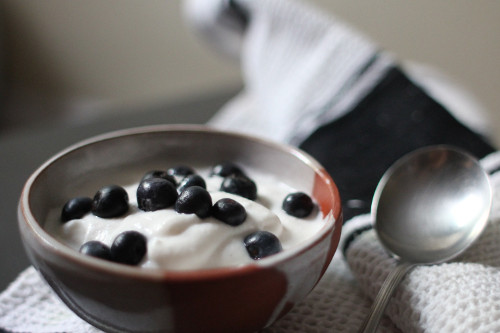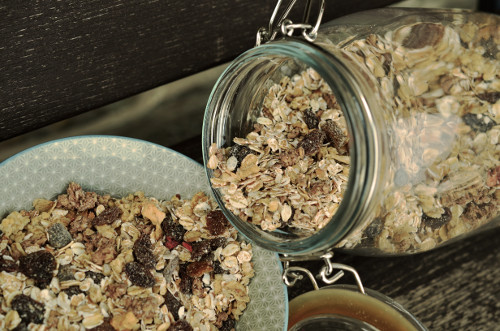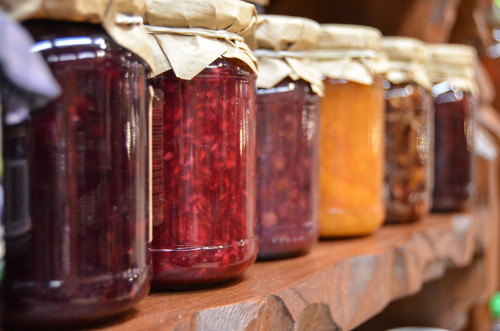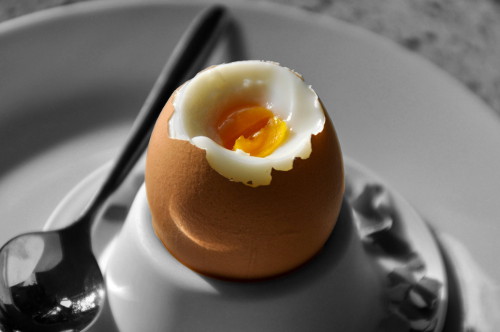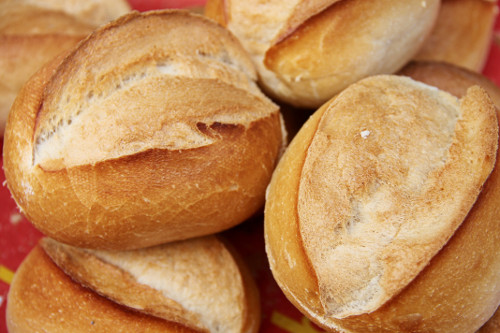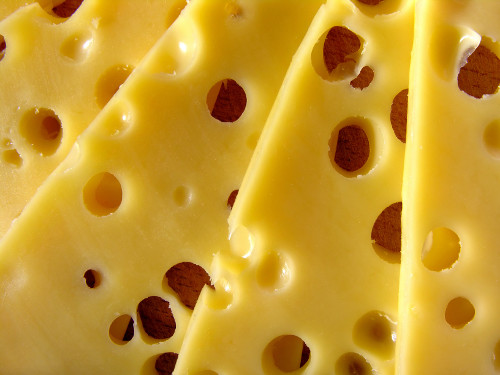4 Was essen Sie zum Frühstück?
In this section you are going to practise the verb essen again, but also try out a new way to memorise vocabulary.
So far, several new nouns connected to food have been introduced. How many food items can you remember spontaneously? Try to say them out loud – without going back to the previous sections – and see how many new words you can list.
Can you also remember the gender of all those new nouns? Was it der, die or das? It is good to know that the definite article (der/die/das) is not needed when you refer to a food item in general terms. For example, you would say: Ich esse Brot und Käse zum Frühstück. Ich trinke Kaffee.
However, if you refer to a ‘unit’ of food, you would use the indefinite article. For example: Ich esse ein Ei und trinke ein Glas Orangensaft (one egg, one glass of orange juice). Therefore, you will need to know the gender of the noun you want to use such as ein Ei (nt.) but eine Banane (f.).
So, as always, it is important to memorise the article with any new noun you learn. But how to remember all those new words? Images can be a great help. Try this: First, start learning new words in connection with pictures – word and image together. The next step is to cover the words and, just using the pictures, name the German word that is depicted with its correct article.
How did you get on with learning those new words? If you like this method and if it works for you, you could print off the photo of the breakfast table in Section 1 and write in the words for the food and drink featured. Alternatively, you can make your own mind map or posters in your notebook to help you learn new vocabulary. Like in Activity 4, start with a few words (five or six) and then build up your list slowly.
Now, remembering the new vocabulary you have just learny, have a go at Activity 5.
Activity 5
In this activity you will only see the picture clues to answer a question and test your vocabulary. It is important that in your answer, you use the same form of the verb as is used in the question. For example, if the verb in the question is used in the 3rd person singular (er or sie), use the same form in the answer. If the plural form is used in the question, your answer will also use a plural form. Replace any names with personal pronouns. For example, die Familie becomes sie (because die Familie is a feminine noun) but Herr König becomes er: The clue is in the title Herr (Mister).
Here is an example:
Now you have a go.
Please note that case is important for each of the question parts below.
Und Sie? Was essen Sie zum Frühstück?
Write your answer in the notebook. In the next section, you’ll practise talking about breakfast.

